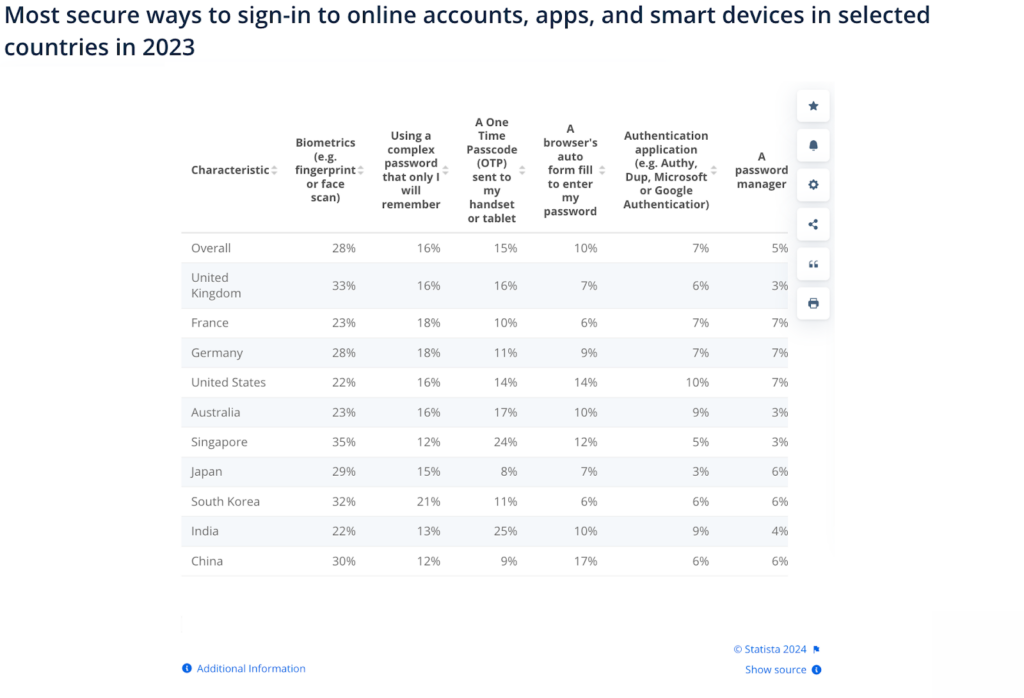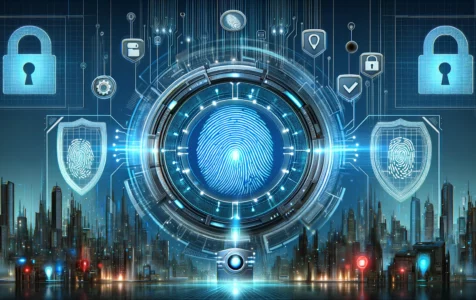Cyber attacks are on the rise, and individuals and businesses are bearing the brunt of the damaging effects of security breaches. The cost of cybercrime in the United States was about $320 billion in 2023 alone, and predictions show that the amount can reach $1.816 trillion by 2028.
Organizations and digital consumers have responded to the increasing number of cybersecurity threats by strengthening their protection from attackers and criminals with the help of biometric security systems.
However, many are still wary of biometrics due to its vulnerabilities to hacking and other security risks. This guide looks into safety concerns surrounding biometric authentication and provides tips on making this technology more secure.
Is Biometric Technology Safe to Use?
Biometric authentication and verification have become widely adopted, as many believe the method makes unauthorized access extremely challenging. Biometrics uses a person’s unique physical and behavioral characteristics to grant access to personal devices, buildings, computer systems, and more. Many consider this a more advanced layer of security than password and username logins.
Over the years, biometrics has become even more advanced and now includes handwriting and signature recognition, typing cadence detection, keystroke rhythms, and scrolling and swiping patterns.
Meanwhile, the cases of biometrics hacking, and data breaches have been making headlines more frequently, causing concern about its safety and privacy. Nevertheless, the latest gadgets and more businesses are using biometrics for security. Through facial recognition, retina scans, and fingerprint mapping, individuals can unlock smartphones, drivers can access fleet management systems remotely, and citizens can register for national databases.
Tech companies and institutions that use biometrics admit it is still not a perfect security system, so they are trying to improve the technology to protect their data and users.
Many countries also still consider biometrics as the most secure way to sign in to apps, online accounts, and smart devices. According to a Statista report, the U.S. and other select countries surveyed in 2023 chose biometrics (28%) as the most secure method, followed by a complex password (16%), and one-time passcodes (OTPs) (15%).

Image from Statista
Security Vulnerabilities of Biometrics
Biometric systems collect large amounts of private, sensitive, and protected data. Unfortunately, this makes them more attractive to individuals who want to get a hold of that data and exploit it for nefarious purposes.
- Spoofing and Fraud. There have been several cases where biometric traits were replicated through different methods, including using high-resolution images for face recognition and fingerprint molds to fool scanners. Many researchers have tested and proven that one can easily replicate fingerprints with printers, wood glue, or gelatin and successfully use them in security screening systems. And who can forget when a Vietnamese security company reportedly hacked the iPhone X’s Face ID using a 3D mask?
- Skimming. This fraudulent activity uses devices that are specifically designed to collect fingerprint data. Hackers will usually discreetly place the device on a fingerprint scanner so they can covertly capture and steal this data. There have been reports about fraudsters who used skimmer machines on ATM devices.
- Data Breaches. Many incidents of unauthorized individuals getting their hands on sensitive information have made the news in the past years. Hackers have stolen biometrics data from the U.S. Office of Personnel Management (OMP), security company Suprema’s BioStar 2 multi-credential authentication web-based platform, and India’s identification authority database, Aadhar.
- Privacy Concerns. Some argue that it can be scarier when someone’s biometric data is compromised, since you cannot change your face structure or fingerprint easily like a password. Privacy advocates are also concerned that because biometric security systems scan and store fingerprints, face structures, retina patterns, and so on, databases could be collecting personal data without someone’s consent.
Another vulnerability of biometric authentication and verification systems is false acceptance and false rejection. There are instances when system failures, environmental conditions, and poor-quality sensors can lead to errors. Aging or injuries may also cause problems since the physical characteristics have changed.
How to Protect Yourself from Biometrics Security Risks
Admittedly, the security risks of biometric systems can make individuals and businesses more apprehensive about using the technology. Many cybersecurity experts suggest fortifying your protection from biometric hacks through a multipronged approach.
- Multi-Factor Authentication (MFA). This process requires more than one authentication method to verify someone’s identity. For example, you may have to provide a password and a fingerprint, a security ID and a retina scan, and so on. Thanks to its layered defense, MFA can make it more difficult for unauthorized individuals to access targets.
- Secure Storage and Encryption. Provide additional protection to your data by limiting access to systems. Assign roles in your organization’s applications and restrict permissions. It can also be a good idea to employ runtime encryption for all data stored on your hard drives and server, and continuously test your firewalls.
- Update Software and Meet Regulatory Compliance. Keep your systems up-to-date so your software and network have the latest security patches and can stay ahead of emerging threats. Businesses that handle biometric data also need to ensure they remain current and comply with privacy laws and industry regulations. You want to ensure you have consent and follow security protocols when collecting biometric data.
- Increase Awareness. Educating your employees and customers about the possible security risks when using biometrics can go a long way. Introduce ways to securely handle sensitive data and how to be aware of signs of breaches. Encourage safety best practices by teaching them how to safeguard their MFA and biometric data and choose stronger passwords.
- Fraud Prevention Software/Anti-Spoofing Technology. The advancements in cybercrime fighting technology now include software and methods to detect deepfake tech and spoofing tactics. For example, some anti-spoofing software can identify if a voice is recorded, computer generated, or modified. There are also face spoofing detection systems that conduct liveness checks to determine whether a face is real or not.
Loss of intellectual property, financial damages, operation disruptions, legal consequences, and tainted reputations are some of the dangers individuals and organizations face due to biometric hacking. The threat of security risks will always be there. Luckily, implementing additional protection systems and choosing a cybersecurity provider who uses the latest fraud prevention technology can improve your chances of avoiding such vulnerabilities.
Move Into the Future with Biometrics Security
Even if biometric authentication and verification systems are prone to security vulnerabilities, it seems the technology is here to stay. Banks, companies with remote workers, government facilities, and even airports rely on biometrics for identification and security access. The global biometrics market size in 2023 was estimated to be worth $41.58 billion and is projected to reach $267.05 billion by 2033.
The trends and data indicate that while there are growing concerns over the safety of using biometric systems, there is also an increasing interest in further developing and implementing the technology. Hopefully, we can look forward to more fortified biometric security systems, prioritizing data and privacy protection.
While we cannot escape the increasing adoption of biometric systems in our everyday lives, we can take additional steps to lessen our exposure and risk to hacks and other cybersecurity threats. Stay informed, educate more people, and use best practices and technology that are designed to keep cybercriminals at bay.
